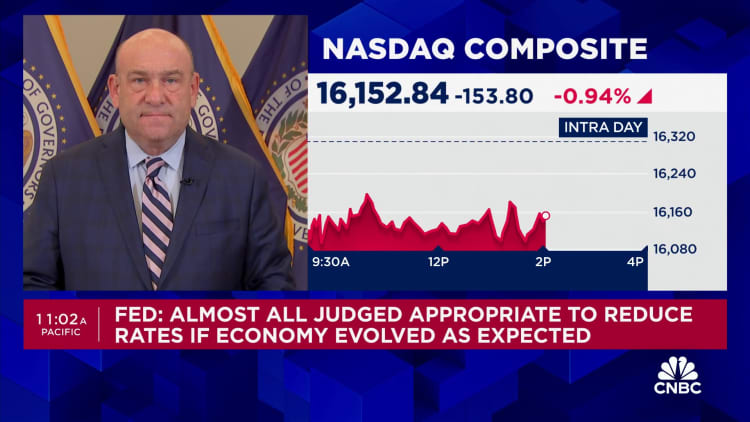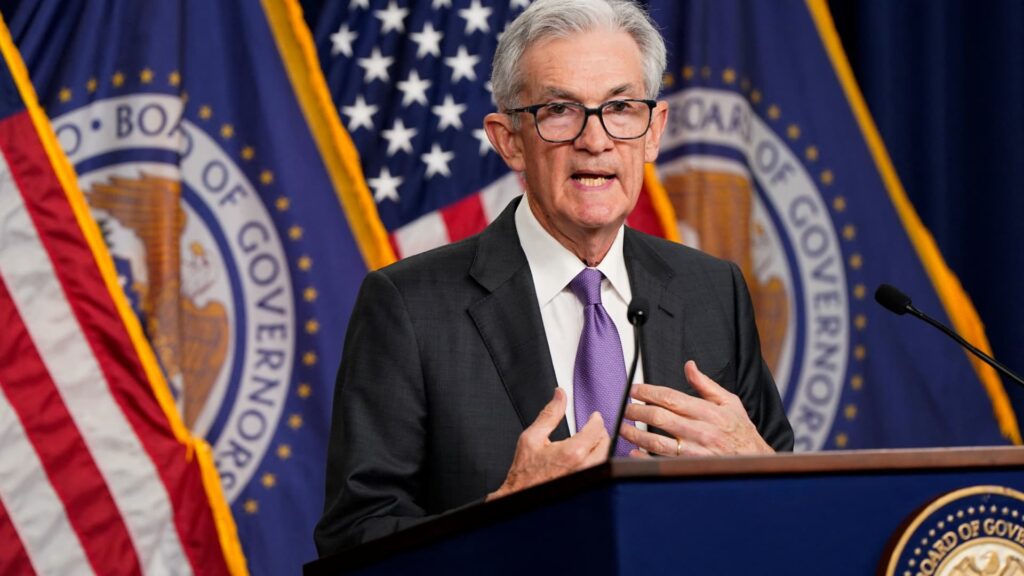
Fed officials at their March meeting expressed concern that inflation is not moving fast enough, although they still expect to cut interest rates at some point this year.
At a meeting in which the Federal Open Market Committee again voted to keep short-term borrowing rates steady, policymakers also expressed suspicions that inflation, although falling, was not doing so in a convincing enough way. The Fed currently targets its benchmark interest rate between 5.25%-5.5%
As such, FOMC members voted to maintain language in a post-meeting statement that they would not cut interest rates until they “gained greater confidence” that inflation was on a consistent path back to the central bank's 2% annual target.
“Participants generally indicated uncertainty about persistent high inflation and expressed the view that recent data did not increase their confidence that inflation is moving sustainably to 2 percent,” the minutes said.
In what appeared to be a lengthy discussion on inflation at the meeting, officials said geopolitical unrest and rising energy prices remained risks that could push inflation higher. They also pointed to the possibility that looser policy could increase price pressures.
On the negative side, they pointed to a more balanced labor market, improved technology along with economic weakness in China and a deteriorating commercial real estate market.
US Federal Reserve Chairman Jerome Powell holds a press conference after a two-day meeting of the Federal Open Market Committee on interest rate policy in Washington, US, March 20, 2024.
Elizabeth Frantz | Reuters
They also discussed higher-than-expected inflation readings in January and February. Chairman Jerome Powell said it was possible that the two months' readings were caused by seasonal issues, though he added that it was hard to know at this point. There were members at the meeting who disagreed.
“Some participants noted that recent increases in inflation have been relatively broad-based and therefore should not be dismissed as mere statistical anomalies,” the minutes said.
This part of the discussion was partly relevant given that the release came on the same day that the Fed received more bad news on inflation.
The Consumer Price Index validates their concern
The Consumer Price Index, a popular measure of inflation but not the one the Fed focuses closely on, showed the 12-month rate at 3.5% in March. That was higher than market expectations and represented a 0.3 percentage point increase from February, giving rise to the idea that the hot readings to start the year may not have been an aberration.
Following the release of the CPI, traders in the federal funds futures market reset their expectations. Market pricing now means the first rate cut will come in September, for a total of only two cuts this year. Ahead of the release, the odds were in favor of the first cut coming in June, for a total of three, in line with “plot point” forecasts made after the March meeting.
“Almost all participants felt it would be appropriate to move the policy to a less restrictive position at some point this year if the economy develops as broadly as they expected,” the meeting minutes noted. “In support of this view, they point out that the process of deceleration in inflation is continuing along a path that was generally expected to be rather uneven.”
In other actions during the meeting, officials discussed the possibility of ending the balance sheet reduction. The Fed has reduced about $1.5 trillion of its holdings of Treasuries and mortgage-backed securities by allowing up to $95 billion of bond proceeds due to trade each month rather than reinvesting it.
No decisions or indications have been made on how what has become known as “quantitative tightening” will be implemented, although the minutes said the rollout would be reduced by “roughly half” from its current pace and the process should begin. Fairly soon.” Most market economists expect the process to begin in the next month or two.
The minutes indicated that members believed a “cautious” approach should be taken.
